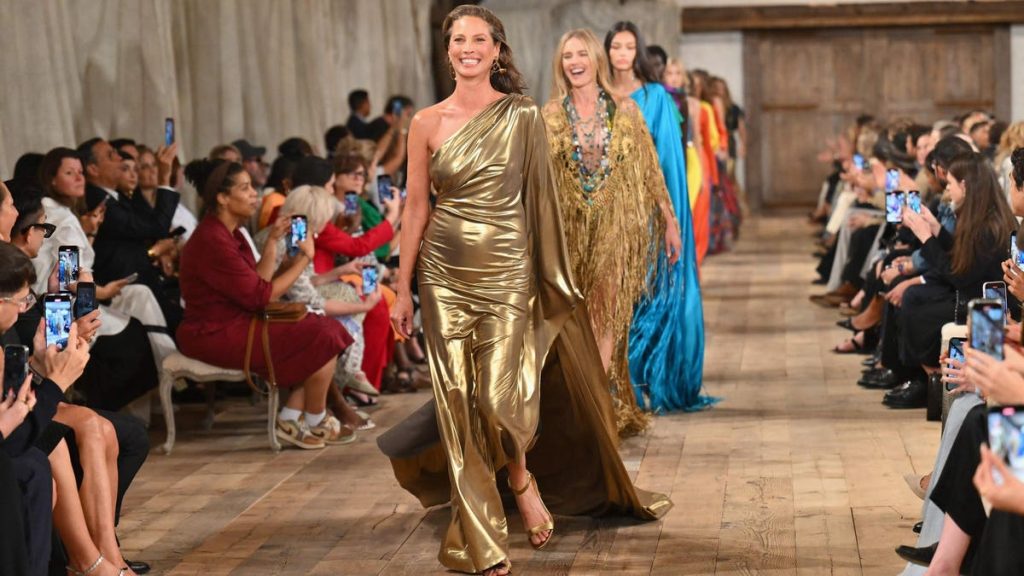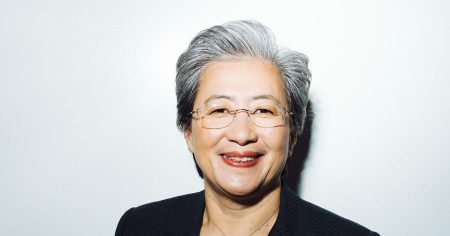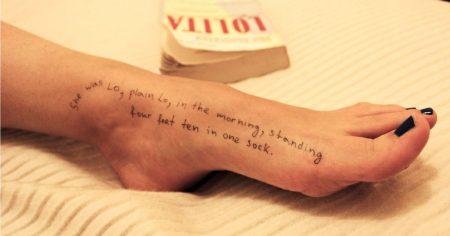“Fashion is not something that exists in dresses only. Fashion is in the sky, in the street, fashion has to do with ideas, the way we live, what is happening.”
That quote from the legendary Coco Chanel captures the essence of fashion as a form of expression and creativity. And it’s true for your marketing content, too. Chanel easily could have said, “Fashion is in the sky, the street, the content you create.”
Although content marketing is my livelihood, I’ve long been fascinated with the fashion industry, especially New York Fashion Week (NYFW) and shows like Project Runway and Next in Fashion. Watching the designers dream up new creations and models strut their stuff sparks my imagination and inspires me to work with my finest colors on full display.
How about you? What might your NYFW collection look like? What kind of story would you tell through your garments? The same principles that apply to fashion design can also apply to your content marketing practice.
In this piece, I hope to fuel your aspirations. I hope to show you how the fashion world fuels me so you can see it as a source of inspiration for your marketing content. To that end, I’ll also share examples of how to turn fashion’s creativity and innovation into haute couture for your content.
Ready? Let’s start the show.
1. The grandeur and the glamour
One aspect that makes fashion shows so exciting is the grandeur and glamour on display. Consider Ralph Lauren, whose comeback to NYFW included a star-studded red carpet and a lavish showing of his Spring/Summer 2024 collection, followed by a sumptuous dinner. Such shows create buzz and attract attention—just as you want to create equally magnificent and attention-grabbing content strategies.
To achieve the grandeur and glamour effect with your content strategy, think big and bold. For example, you could launch your next product or service with a teaser campaign, live event, or celebrity endorsement. You could also create content that showcases your brand’s vision, values, and personality.
Consider Apple. Apple uses grand product launches to create a buzz, just as fashion designers do when designing high-profile fashion shows. Apple creates anticipation and excitement for its next new thing with teaser videos, countdowns, invitations, and live streams. Apple also nestles its products in sleek designs, stunning photography, and compelling copy.
Another way to create grandeur and glamour in your content is to adorn it with the most exquisite designs. Like a runway show rich in intricate embroidery, pearls, feathers, and crystals, your content can be beautiful and vibrant, filled with high-quality visuals and narratives. For example, you could use beautifully designed infographics, artistically filmed videos, and deep, descriptive case studies to enhance your content and make it grander and more glamorous for your audience.
2. The art of storytelling
Another aspect that makes runway shows so captivating and memorable is the art of storytelling they demonstrate. One memorable story emerged through designer Alexander McQueen’s Fall 2007 show, inspired by the Salem witch trials and the dark side of human nature. McQueen’s mother had traced the family’s ancestry to a victim of the Salem witch trials in 1692. His show, blasted by critics for being too dark and macabre, still took the audience on a journey, just as you narrate a story through your content.
To achieve this effect, think creatively and strategically when creating your content strategy. For instance, you could use the hero’s journey framework, a problem-solution approach, or a before-after scenario to structure your content and make it more compelling. You could also use sensory details, emotional triggers, and immersive storytelling techniques like streaming or recorded videos to create content that appeals to your audience’s senses, feelings, and imagination.
Airbnb is a great example of a company that has successfully embraced storytelling. After dialing back its reliance on performance marketing during the pandemic to better communicate the differentiators that set it apart, sales jumped 24%. Hiroki Asai, Airbnb’s CMO, spoke with The Drum about the shift, saying that Airbnb needed to put its brand message into the market instead of reactive, transactional press communications. “Airbnb kind of lost control of the brand a little bit—and of the message and narrative,” he said. Asai knows brand marketing, having spent 18 years on Apple’s marketing team.
Another way to spin stories in your content is to use historical and cultural inspirations. Like a fashion collection featuring motifs from ancient Greece, Egypt, or China, your content should be a meaningful and beautiful reflection of your brand’s identity and values.
For instance, you could use historical figures, events, or myths to illustrate your points or convey your message. You could also use cultural references, symbols, or trends to connect with your audience and create a sense of belonging.
Fashion designer Gabriela Hearst used this technique in her Spring/Summer 2023 collection, inspired by the ancient Greek poet Sappho and featuring black, white, and gold designs with fire motifs. To further tell the story, the Resistance Revival Chorus accompanied her show, dressed in all white and singing throughout the presentation.
3. The art of innovation
Another aspect that makes fashion shows dynamic and exciting is their bent toward innovation. Designer Zoe Gustavia Anna Whalen brought innovation to the forefront at NYFW when she presented her collection inside a dirt-lined labyrinth at St. Mark’s Church. Speaking to Cultured, Whalen explained how she told her models to walk the maze in a steady, unhurried procession. “I wanted the focus to be less on the runway than on this sense of community, slowness, and meditation,” she said.
Whalen also creates her garments using discarded materials, which more designers are doing of late to offset the industry’s role in climate change. Conde Nast Traveler’s September/October 2023 edition features up-and-coming African designers, two of whom—Nkwo Onwuka from Nigeria and brothers Boie and Bill Bamfo from Ghana—use donated clothes that wound up in landfills as the basis for their creations. The Bamfos repurpose and upcycle the discarded clothes, while Onwuka uses them to create a proprietary fabric, Dakala cloth.
To innovate in the content arena, think outside the box and experiment with new formats, platforms, and trends. For example, you could try new mediums, like interactive content or virtual reality, to create immersive and engaging experiences for your audience. You could also explore new channels, such as video or a podcast, to reach new audiences and expand your reach.
Tommy Hilfiger played with new mediums when he teamed up with British designer Richard Quinn for a modern take on classic Americana inspired by Andy Warhol’s studio, The Factory. Hilfiger’s Fall 2022 show, “a phygital event,” involved multimedia like tin-foil sculptures, audio clips of Hilfiger and Warhol chatting, a Tommy Factory NFT, and a surprise finale performance by the drummer Travis Barker. “This season is all about the collision of my favorite archival inspirations with new live event concepts and virtual worlds,” Hilfiger said in a press release about the show.
4. The magic of adaptability
Another way to innovate is to adapt and rebrand, as Victoria’s Secret did when it returned to NYFW this year, four years after shuttering its sexy lingerie show. This year, staging what it hopes is a comeback, the brand re-entered Fashion Week with a show that wasn’t so much a show as it was a teaser for the show to come—a full-length film called “The Victoria’s Secret World Tour,” which will stream on Amazon Prime on September 26.
Described as “part spectacular fashion event, part documentary,” the film features a diverse, inclusive cast of models, including transgender and plus-size models. It takes viewers behind the scenes and into the intimate stories of 20 global creatives. Fashion critic Vanessa Friedman from the New York Times notes that the designs featured in the film won’t be mass-produced, “thus underscoring the company’s altruistic desire to give women as big a platform as possible while receiving nothing in return” other than “the various stamps of approval from individuals who may otherwise never have given much thought to a lingerie brand known for making women into popsies.”
Consider—reinventing or even reinvigorating—your brand’s identity and voice to use the magic of adaptability. Like a collection featuring neon colors, graffiti art, and holographic effects, your brand could shine by using humor, irony, or even controversy to create content that stands out and sparks conversation. You could also challenge conventional wisdom and assumptions to create content that surprises and delights your audience.
5. The divinity of detail
Another reason I appreciate fashion design—my favorite reason—is the attention to detail required to create standout garments. Giorgio Armani immediately comes to mind as a designer well-known for his quest for perfection, especially in his impeccably tailored suits. “The difference between style and fashion is quality,” he said, suggesting that true style emerges from the impeccable craftsmanship of high-quality garments.
Fashion designer Thom Browne also cares about the details in his garments. Browne’s Fall 2023 collection was inspired by the words of French writer Antoine de Saint-Exupéry, who said, “Perfection is achieved, not when there is nothing more to add, but when there is nothing left to take away.”
As a content editor, I resonate with those words. I also found it hard to read descriptions of Thom’s show without encountering the language of perfection. For instance, in one of the (many) articles I read, I noted numerous phrases that speak to Browne’s attention to detail, such as meticulously tailored, delicately hand-hooked, and impeccably tailored.
Similarly, high-quality content is impeccably crafted—and impeccably proofed and edited. It’s also crafted from high-quality materials—for instance, data and research that support your claims, such as statistics, surveys, and case studies. Other high-quality materials include clear, actionable steps for your readers, such as how-to guides, checklists, and templates. Personalization adds another layer of quality by providing specific tones, formats, and messages for different segments and personas.
6. The power of color
Another aspect that makes fashion shows so stunning and expressive is the power of color on display. Designer Elie Saab’s Spring/Summer 2022 collection, an ode to the Mediterranean, was a study of the power of color to evoke, transport, and transform. “A bright spectrum of colors splash across a panorama of silhouettes that take us on a marvelous journey,” the show’s press release said, painting pictures of celestial blues, sea greens, a sparkling sea of aquas, and layers of fuchsia, blush, and chartreuse. Saab used color to evoke passion, elegance, and a terrestrial paradise, creating stunning effects, emotions, and moods—the same emotions and moods you’d like to evoke in your audience.
Think carefully and creatively when tapping the power of color for your content. For instance, you might use colors that match your brand identity, message, and tone, such as warm colors for excitement and energy, cool colors for calmness and trust, or neutral colors for professionalism and sophistication. You could also use contrasting colors to draw emphasis or attention and complementary colors to suggest harmony and balance.
Using color successfully is about understanding color psychology and how colors influence your audience’s behavior and perception. “Between 70 percent to 90 percent of subconscious judgment on a product is made in a few seconds on color alone,” Jenny Ross, head of concept design and strategy for New Balance, told the New York Times. “It can excite or calm us; it can raise our blood pressure. It’s really powerful.”
In your content, you could use red to trigger a sense of urgency and action, blue to suggest reliability and security, and green to speak of growth and sustainability. As the same New York Times article points out, many fashion brands use color this way. “In fashion, color is also your brand. Fendi is yellow, Hermes is orange, and Tiffy is blue.”
What color is your brand?
7. The art of collaboration
A final aspect that makes fashion shows so interesting is the art of collaboration they demonstrate. Fashion designer Virgil Abloh, a prolific collaborator, became known for his 26 collaborations with brands as diverse as Mercedes Benz, the NBA, Braun, Nike, Kanye West, and Ikea.
More recently, Ukrainian designer Svitlana Bevza, who showed her latest Spring/Summer 2024 collection at this year’s NYFW, successfully collaborated with Mastercard to promote kalyna—or the red viburnum tree, the Ukrainian symbol of resilience. “Red viburnum is a very special spiritual heirloom for Ukrainians,” Bevza said in a press release. “We aspire to share this symbolism with the wider world, uniting people around supporting Ukraine and discovering its cultural roots.”
Such collaborations create synergy and connection with mutual audiences, similar to how you might collaborate with other creatives and experts to enrich your content and reach new customers. For instance, you could partner with other content creators who have different skills and strengths than you, such as writers, designers, videographers, or podcasters. You could also collaborate with content creators with different audiences or niches, like influencers, bloggers, or journalists.
Another way to collaborate in your content is to tap into the talents and perspectives of people who can help you create more engaging and inclusive content. For instance, you could feature guest posts, interviews, or testimonials from other experts or influencers in your field.
You could also feature customer feedback, reviews, and user-generated content (UGC), which has the potential to boost sales significantly. Flowbox, an advanced UGC platform, points to social shopping as serious social proof. The company says that UGC is five times more likely to convert customers versus professional product shots.
And they do more than say it; they prove it with several case studies. For instance, Barts, the Dutch accessories brand, saw a 9.2% increase in conversions and a 20.5% average order value increase after implementing UGC. TopVintage, another Flowbox user, increased its average order value by 8.3%. Karl Lagerfeld experienced a 7% increase in conversions and a 20.8% lift in average order value. The proof, as they say, is in the stats.
What’s next? Make it work!
Fashion can be a great source of inspiration for your content marketing. By applying these seven principles of fashion design to your content creation, you, too, can create content that inspires and delights your audience, just like NYFW delights me and many thousands of others.
Perhaps my love of fashion comes from an old jingle for the clothing company, Ideal. “If you’ve got a passion for fashion, if you’ve got a craving for savings, take the wheel of your automobile, and swing on down to… Ideal.” The image above links to a YouTube video with the tune—in case you’re curious.
So, go ahead! Grab your sketchbook and start designing your next content marketing masterpiece. As Project Runway’s beloved Tim Gunn says, and as I’m sure you’ll do: “Make it work!”
Read the full article here










